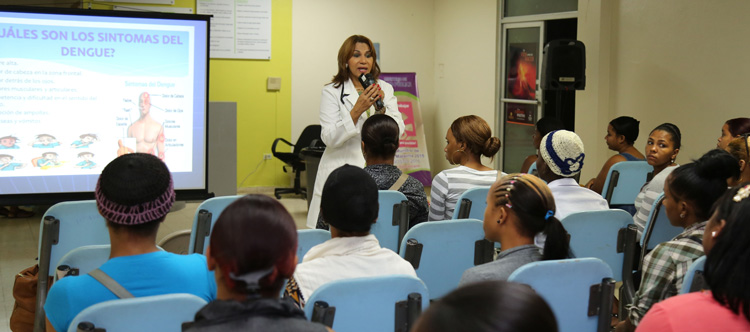The explosion of the Zika virus in South America, Central America and the Caribbean has provided more vivid evidence of the urgency to invest in pandemic prevention and preparedness.
The virus is spread by the day-biting Aedes aegypti mosquito that also carries dengue and chikungunya viruses. Although it was first identified in 1947, until the 2000s it had been confined to Africa.
Until recently, Zika was considered an innocuous illness — 80 percent of those infected were asymptomatic and the rest suffered a rash and mild symptoms of flu.
Since May 2015, however, Brazil has reported nearly 4,000 confirmed and suspected cases of microcephaly believed to be associated with Zika infection — a dramatic increase from the typically fewer than 150 cases per year.
Microcephaly is a birth defect characterized by an abnormally small head and brain, variously associated with early developmental delay, intellectual disability and other problems. Some cases in Brazil have been severe and some children have died. Some seven out of eight cases are in Brazil’s poorest states, in the northeast of the country.
Last week, the World Health Organization said that the recent cluster of microcephaly cases and other neurological disorders constituted a Public Health Emergency of International Concern.
Unlike other pandemic diseases, the biggest fear of families and communities is not the death of loved ones, but disability of an unborn child. In December 2015, BBC Brazil reported from the rural zones in Pernambuco that pregnant women there were “terrified by what they know about Zika.” Other reports from Brazil describe women as unaware of the threat. Some public health experts in Brazil expect that before the end of 2016, there may be as many as 15,000 cases of microcephaly.
Three urgent actions are critical now for the well-being of women and children in Zika-affected countries:
1. Highly aggressive mosquito control is vital to reverse the explosion of new cases.
Government programs for widespread spraying and active community engagement to eliminate mosquito breeding grounds must be top priority. We would not be where we are today with Zika had there not been serious lapses in government-led mosquito control in affected countries. In 2015 alone, there were 2.3 million suspected and 560,000 confirmed cases of dengue fever in the region, mostly in Brazil, Peru, Mexico and El Salvador. For Brazil, the twenty-fold increase in cases of dengue over the past five years became a harbinger of Zika.
2. Governments and communities must support women to make informed, empowered choices about pregnancy.
Right now there is an alarming lack of consistency on what governments and institutions are instructing their citizens to do. The governments of Brazil, Colombia, Jamaica and Ecuador have urged women not to become pregnant in the coming months until more research is done. El Salvador has taken the seemingly draconian measure of recommending that its citizens refrain from having any children at all until 2018.
In a region where more than half of all pregnancies are unintended, women and adolescents too often are denied the power and lack access to the services needed to control their own pregnancies. Women do not always have access to critical antenatal care to detect birth defects and may have insufficient access to infant and child health care. In this setting, Zika must become a catalyst for linking Zika prevention messages with child care and family planning messages, protecting the sexual and reproductive rights of women — especially the poorest — and expanding access and choice in family planning services.
3. National health services, local civil society, churches and others must begin working with families and communities to create the necessary developmental and support services for children with Zika-related disabilities.
The spectre of thousands of affected children will be daunting for countries already suffering under the weight of widespread poverty, weak economies and social challenges. And reports from Brazil suggest microcephaly may be just the tip of the disability iceberg. Microcephaly support groups in Europe, North America and elsewhere, along with groups with related experience, can play an important role in rapidly expanding needed support.
In a globalized world, a weak public health system anywhere increases people’s vulnerability everywhere. More investment in primary health care and community health workers and more training to prevent disease, detect outbreaks and rapidly respond will make a big difference not only to these communities but to the rest of humanity.
The strongest defense against Zika and other emerging infectious disease epidemics is to focus on investing in strengthening national and local public health systems. This is the only way we will protect ourselves and our children.
About the authors
Jonathan Quick
Jonathan Quick is president and chief executive officer of Management Sciences for Health, a non-profit global health organization that develops sustainable health systems in Africa, Asia, Latin America and the Middle East. Quick is also a faculty member at Harvard Medical School and chair of the Global Health Council. Prior to joining MSH, he was the director of Essential Drugs & Medicines Policy at the World Health Organization.
Nancy Aossey
Nancy Aossey is president & CEO of International Medical Corps, a non-governmental organization dedicated to saving lives and relieving suffering through medical relief, health care training, and development programs that build self-reliance. Nancy joined International Medical Corps in 1986, shortly after its founding in 1984. She went on to establish the organization as a leader in medical crisis response and recovery, and into one of the largest humanitarian organizations.
Carolyn Miles
Carolyn Miles is president and CEO of Save the Children and co-chair of the Modernizing Foreign Assistance Network. After starting out as an entrepreneur and working in Hong Kong for American Express, Miles joined Save the Children in 1998 and was also COO from 2004-2011.
